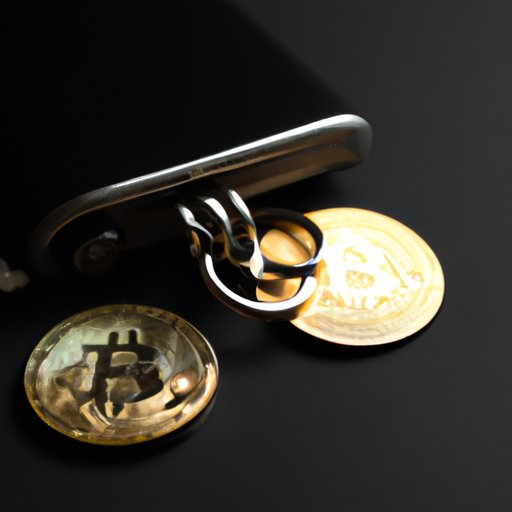Introduction
Bitcoin is a digital currency that can be used to purchase goods and services. To store and manage your Bitcoins, you need a Bitcoin wallet. This is similar to a physical wallet, but instead of cash, it holds digital currency. In this article, we will provide a step-by-step guide to help beginners create a secure personal Bitcoin wallet.

Research Different Types of Wallets
When it comes to choosing a wallet, there are several different types available. It’s important to understand the pros and cons of each before making a decision. Here are some of the most popular types of wallets:
Hot Wallets
Hot wallets are connected to the internet, making them more vulnerable to hackers. However, they are easy to use and offer fast access to funds. Hot wallets are best suited for users who need quick access to their funds or those who don’t have a large amount of money to store in their wallet.
Cold Wallets
Cold wallets are not connected to the internet and therefore are much more secure. They are more difficult to use and require more setup, but they are ideal for users who want to store large amounts of money. Cold wallets also allow users to store their private keys offline, which adds an extra layer of security.
Paper Wallets
Paper wallets are another type of cold wallet. They are printed on paper and contain all of the necessary information needed to access the Bitcoin stored in them. Paper wallets are a good choice for users who want to store their funds offline but don’t want to invest in hardware.
It’s important to determine which type of wallet best suits your needs before proceeding. Hot wallets are best for users who need quick access to their funds, while cold wallets are better suited for users who want to store large amounts of money securely. Paper wallets are a good option for users who want to store their funds offline without investing in hardware.
Create an Account with a Wallet Provider
The next step is to create an account with a wallet provider. There are many reputable providers available, so take the time to research and find one that offers the features you need. Once you’ve found a provider, sign up for an account.

Download the Wallet Software or Mobile App
Once you’ve created an account, you can download the wallet software or mobile app. Make sure to download the appropriate version for your device. Then, install the software and follow the instructions to create your wallet.
Generate a Secure Password and Back-Up Your Wallet
Now, it’s time to generate a secure password and back-up your wallet. Choose a strong password that is difficult to guess and make sure to use two-factor authentication for added security. Additionally, make sure to back-up your wallet in case anything happens to your device.
Transfer Funds from an Exchange or Other Wallet into Your Wallet
Once your wallet is set up, you can link it to an exchange and transfer funds from your other wallet. This can be done easily with most wallets, and it’s important to make sure you are transferring the correct amount of funds.

Learn How to Use the Wallet Features and Security Measures
It’s important to learn how to use the wallet features and security measures. Take the time to understand the different features available in your wallet and familiarize yourself with the security measures. This will help you protect your funds and ensure that you are able to access them when needed.
Store Private Keys and Backup Codes in a Secure Location
Finally, you should store your private keys and backup codes in a secure location. Private keys and backup codes are used to access your wallet, so it’s important to keep them in a safe place. You can choose a physical location such as a safety deposit box or a digital storage solution such as a USB drive.
Conclusion
In conclusion, creating a personal Bitcoin wallet requires careful consideration and understanding of the different types of wallets. You need to research and identify reputable wallet providers, download the appropriate software, generate a secure password and back-up your wallet, transfer funds from an exchange or other wallet, and store private keys and backup codes in a secure location. By following these steps, you can ensure that your wallet is secure and that you have access to your funds when needed.
(Note: Is this article not meeting your expectations? Do you have knowledge or insights to share? Unlock new opportunities and expand your reach by joining our authors team. Click Registration to join us and share your expertise with our readers.)
